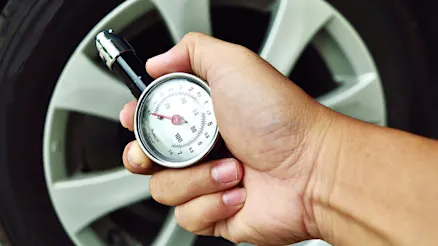
Why does my car behave differently when I start it in the morning?
Ever notice your car feels different in the morning? Learn why cold starts affect performance and how to keep your car running smoothly year-round.

Have you noticed it’s becoming trickier to get out of your car in the parking lot? You’re not imagining it, because big cars have become a massive trend in recent years.
It’s true to say both that cars themselves are growing in size, and that we’re buying larger vehicles than we used to. For example, the Toyota RAV4 has gained about 15 cm in width and half a tonne in weight since it was launched in the 1990s. Meanwhile the Ford Ranger and Toyota HiLux have become the most popular new vehicles sold in Australia, and more than half of new vehicles sold in Australia are SUVs.
It might seem counterintuitive that cars are getting bigger while families are shrinking in size and we’re trying to minimise our collective footprint on the planet. So what’s going on?
While it’s impossible to narrow the change down to a single factor, here are a few aspects that are no doubt having an effect:
As car safety standards have expanded, so have the cars that must accommodate the related safety features. Front and side airbags, safety cells, crumple zones, sensors, autonomous braking – all of these invaluable functions and features add up and require space, so car designs have evolved in response.
As a population we’re preferring bigger cars. And one simple explanation is that light commercial vehicles offer a much better experience than they used to. “As the comfort and features of SUVs and dual cab utes have improved in recent years, more buyers have been looking to these options for their family car,” says Carma’s Director of Buying Peter Willis. “They’ve become much more of an all-in-one vehicle and are really convenient when you think about running those weekend errands.”
Light commercial vehicles and wagons are generally better equipped for towing than smaller cars, whether we’re talking about a boat or a caravan. The pandemic prompted many families to invest in caravans, and the interest in driving adventures is still there with Australia’s trailer and caravan industry revenue worth around $3.3 billion as of 2024/5.
This last factor might be a bit of a surprise, but our push towards greener cars could also be leading to bigger cars – at least, for now. Electric vehicle batteries are heavy, and these can require bigger tyres and car frames in an EV design. In fact, as of 2022 over half of the available EV models available around the world were SUVs.
In a lot of cases it simply makes sense for many families to go big. It means more cargo space, more room to breathe and a little extra flexibility. And those in their thirties, forties and beyond are more likely to buy bigger cars, which probably reflects different life stages like growing a family and heading off on those grey nomad adventures.
Our love for large cars is actually having some direct effects on infrastructure design.
Parking spots are, of course, one consideration. The average car in Australia is around 1.94 metres wide and the typical car parking spot is around 2.4 to 2.6 metres wide, but some of the large pickup trucks imported from the US clock in at 2.2 to 2.4 metres in width. That leaves very little room for bad parking! Standards Australia is actually considering increasing the length of off-street parking spaces by 20 cm to 5.6 metres in response to growing car sizes.
Large cars can also be heavy and lots of them together could change the requirements for car park and bridge engineering, so there is definitely incentive to make them lighter on their feet. Car makers are developing all sorts of ideas to lower the weight and frame size of cars, including using different alloys and materials.

Of course, the love of big cars is even more prevalent in the US, where over 80% of new cars sold are SUVs or pickup trucks. And this staggering statistic could hark back to the revision of fuel economy standards in the 2010s. Somewhat ironically, an update to the Corporate Average Fuel Economy (CAFE) standards ended up incentivising manufacturers to sell more large cars, as the required fuel economy threshold was relatively lower than for small vehicles.
And Australia and the US aren’t alone in the demand for bigger cars. In fact SUVs now account for around half of all new car sales globally. Parisians have voted to triple the parking fees for SUVs parking in the city centre to try and ensure there’s space for others. And Japan has incentivised the purchase of a lighter class of cars called Kei cars by offering tax breaks and insurance incentives. Of course, in many countries it’s also cheaper to insure and run small cars.
Whether you love small and zippy or big and roomy, it’s becoming easier to find what you’re looking for second-hand. Carma is a fully digital used car dealership, giving you a vast choice of pre-checked vehicles that are ready to be delivered to your door. There’s no haggling and no hassles – just the perfectly sized car for you, so here’s where you can start your search today.

Ever notice your car feels different in the morning? Learn why cold starts affect performance and how to keep your car running smoothly year-round.

Regularly checking your tyre pressure is crucial to your vehicle’s safety, fuel economy and optimal driving.

Looking for the perfect gift for the car enthusiast in your life? Carma’s experts have you covered.